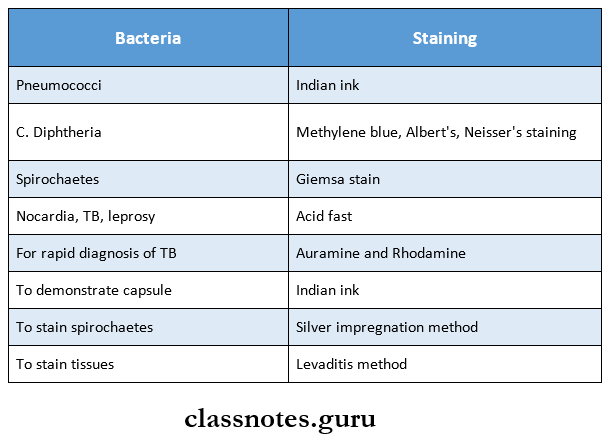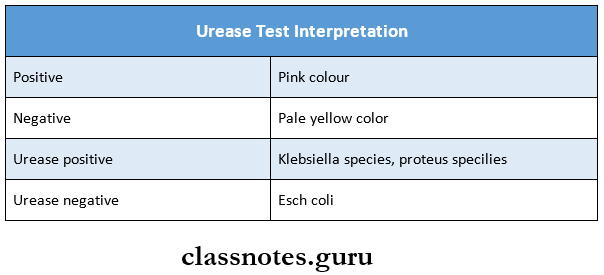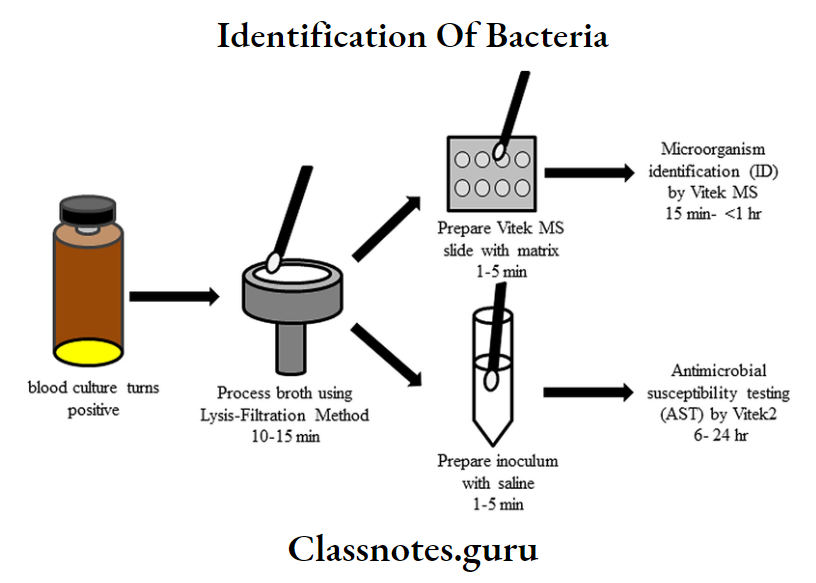Identification Of Bacteria Important Notes
1. Types Of Microscopy Used For The Identification Of Bacteria
- Optical or light microscopy
- Phase contrast microscopy
- Darkfield microscopy
- Interference microscope
- Polarization microscope
- Electronic microscope
2. Staining Of Bacteria

Identification Of Bacteria Short Answers
Question 1. Indole Test?
Answer:
Indole Test Principle: To determine the ability of an organism to decompose amino acid tryptophan into indole.
Indole Test Procedure:
- Inoculate the test bacterium into tryptophan-rich peptone water and incubate at 37°C for 48-96 hours.
- 0.5 ml of Kovac’s reagent is added and gently shaken.
Indole Test Interpretation:
- Indole positive – A red-coloured ring near the surface of the medium
- Indole negative – A yellow-coloured ring near the surface of the medium.
Indole Test Use:
- To identify and classify bacteria.
- Indole positive: E.Coli, Proteus species
- Indole negative: Klebsiella species
Question 2. Urease test?
Answer:
Urease Test Principle: To determine the ability of an organism to produce an enzyme urease which splits urea to ammonia.
Urease Test Procedure:
- The test is done is Christensen’s urease medium
- Test organism was inoculated on the entire slope of the medium and incubated at 37°C.
- It is examined after 4 hours and overnight incubation.
Read And Learn More: Microbiology Question and Answers
Urease Test Interpretation:

Question 3. Voges – proskouev test:
Answer:
Voges – Proskauer Test Principle: This test depends on the production of acetyl methyl-carbinol from pyruvic acid as an intermediate stage in its conversion to 2:3 butylene glycol.
Voges – Proskouev Test Procedure:
- 1 ml of glucose phosphate medium culture of the organisms incubated at 30°C for 5 days (or) 37°C for 48 hours is taken
- Then 1 volume (0.2 ml) of 40% KOH and 3 volumes (0.6 ml) of 5% a-naphthol solution in ethanol are added.
Voges – proskouev Test Interpretation:
- Positive- Pink colour appears in 2 – Minutes
- Negative- No colour change for 30 minutes it remains colourless.

Identification Of Bacteria Viva Voce
- Casoni test is used to diagnose hydatid cyst
- DNA in bacteria is composed of two strands of complementary nucleotides wound together
- Weil Felix reaction is used for typhus fever
- Paul Bunnel test is used for infectious mononucleosis
- Montoux test is used for tuberculosis
- Naggler’s reaction is used for Clostridium
